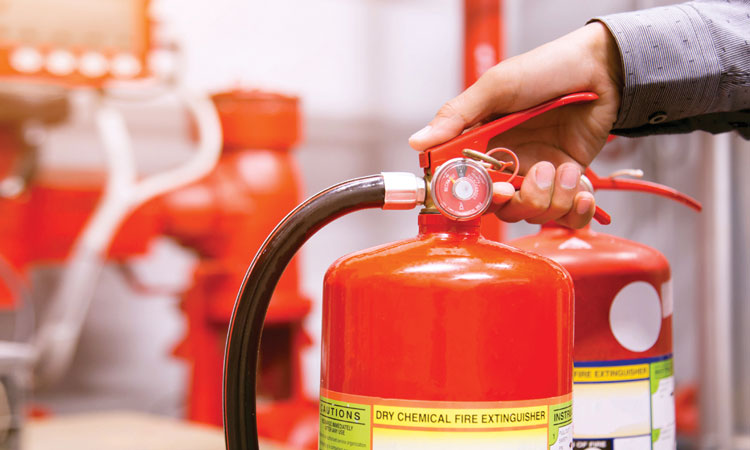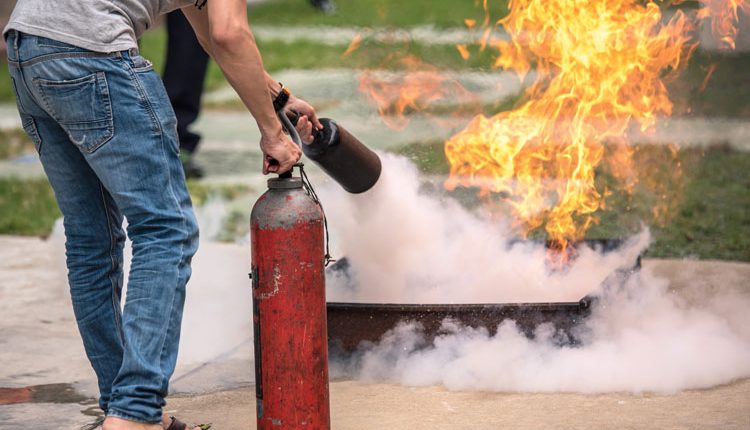Fire extinguishers are an essential tool for fire safety in homes, businesses, and public spaces. They are designed to control and suppress fires, preventing them from spreading and causing further damage. This article explores the various types of fire extinguishers, their usage, and important safety considerations.
Types of Fire Extinguishers
There are several types of fire extinguishers, each designed to combat specific types of fires. These types are classified by letters and color codes:
a. Class A: Suitable for ordinary combustibles like wood, paper, and cloth. They are typically labeled with a green triangle and are filled with water or a dry chemical agent.
b. Class B: Designed for flammable liquids such as gasoline, oil, and grease fires. These extinguishers are labeled with a red square and contain foam, powder, or carbon dioxide (CO2).
c. Class C: Intended for electrical fires, involving live electrical equipment. They are marked with a blue circle and usually contain CO2 or dry chemical agents.
d. Class D: Specifically for fires involving combustible metals like magnesium, sodium, or titanium. They are denoted by a yellow star and typically contain dry powder agents.
e. Class K: Primarily used in commercial kitchens to extinguish fires caused by cooking oils and fats. They are labeled with a black hexagon and contain a wet chemical agent.
How to Use a Fire Extinguisher
Using a fire extinguisher is a straightforward process if you remember the PASS technique:
a. Pull: Pull the safety pin or ring to break the tamper seal.
b. Aim: Point the nozzle or hose at the base of the fire, not the flames.
c. Squeeze: Squeeze the handle to release the extinguishing agent.
d. Sweep: Move the nozzle from side to side, sweeping it across the base of the fire, while maintaining a safe distance.

Fire Extinguisher Safety Tips
To ensure you are well-prepared and safe when using a fire extinguisher, consider the following tips:
a. Know the location: Familiarize yourself with the location of fire extinguishers in your home or workplace. Ensure they are easily accessible and not blocked by obstacles.
b. Read the instructions: Understand how to use the specific fire extinguisher you have. The instructions are typically printed on the label.
c. Maintain and inspect: Regularly inspect your fire extinguishers to make sure they are in good working condition. Check the pressure gauge, seals, and expiration date.
d. Evacuation first: Only use a fire extinguisher if the fire is small and can be controlled. If the fire is spreading rapidly or you are unsure, evacuate and call the fire department.
e. Stand at a safe distance: Maintain a safe distance from the fire, which is usually around 6 to 8 feet. Avoid getting too close to prevent injury.
f. Fire extinguisher training: If possible, consider receiving training on how to use a fire extinguisher effectively. Many fire departments offer hands-on training.
Maintenance and Inspection
Fire extinguishers require regular maintenance to ensure their reliability. This includes:
a. Monthly checks: Visually inspect the extinguisher for any signs of damage, such as dents or leaks, and ensure the pressure gauge is in the green zone.
b. Annual servicing: Have a professional service the fire extinguisher at least once a year to check for more in-depth issues and recharge it if necessary.
c. Recharging or replacement: If the pressure is below the recommended level or the extinguisher is damaged, it needs to be recharged or replaced.
Conclusion
Fire extinguishers are an essential tool in fire safety and can prevent small fires from becoming major disasters. Understanding the types of extinguishers, proper usage, and safety considerations is crucial for effective fire prevention and protection. Regular maintenance and inspection ensure that these life-saving devices are always ready for action.


